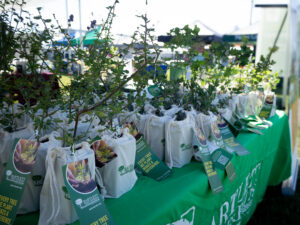“A Hardy Landscape Tree”
The northern red oak (Quercus rubra) is a fast-growing and long-living tree known for its beautiful red fall color, value to wildlife and status as the state tree of New Jersey. Called “one of the handsomest, cleanest and stateliest trees in North America” by naturalist Joseph S. Illick, the northern red oak is widely considered a national treasure. This tree is valued for its adaptability and hardiness in urban settings. The northern red oak is also one of the most important oaks for timber production; used for furniture, flooring, and veneer. It is native to most regions of the U.S. near and east of the Mississippi River, excluding the Deep South.

Culture
- Prefers fertile, well-drained, moist soils, but is adaptable to dry to medium moisture.
- Can tolerate urban conditions, but will not perform well in alkaline (high) soil pH.
- Roots can interfere with sidewalks and other infrastructure.
Concerns
- Boring insects can attack weakened or stressed trees.
- Defoliating caterpillars like winter moth, cankerworm and gypsy moth can cause defoliation. Multiple years of defoliation can cause stress.
- Bacterial leaf scorch can infect in areas of the East and Midwest.
- Open-grown trees need structural pruning to develop a central leader or multiple branches may arise from the same spot on the trunk.
Bartlett Management Practices
- For young trees frequent structural pruning is necessary to obtain a central leader and proper lateral branch development.
- Preventative applications for borers and/or caterpillars may be necessary.



